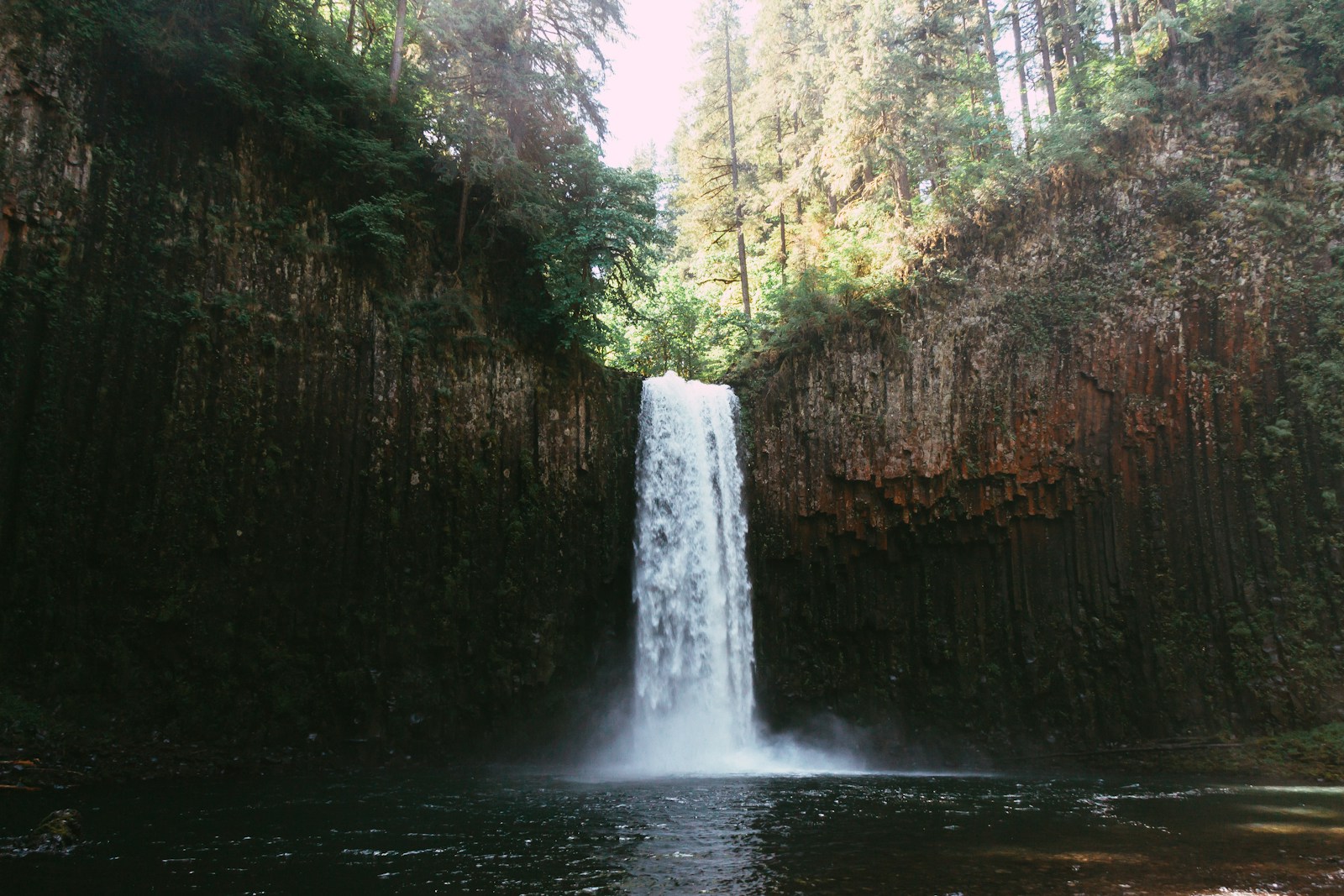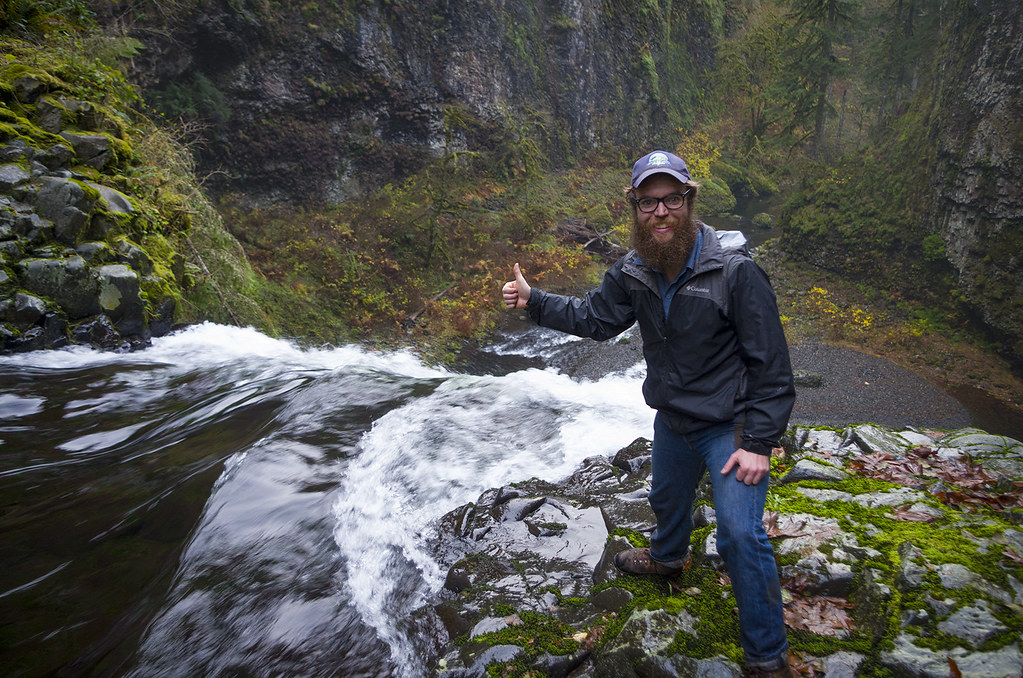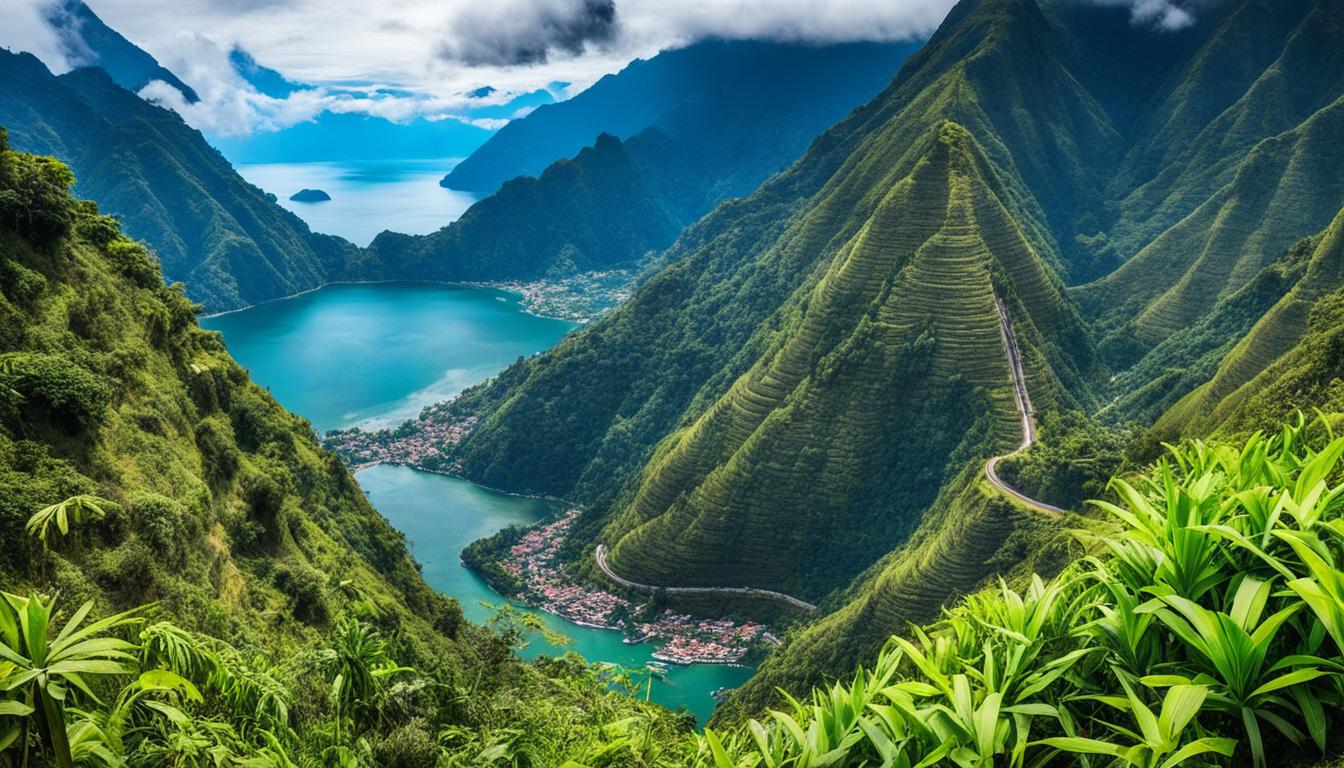Tucked away in the lush greenery of Oregon’s backcountry, you’ll find the stunning Abiqua Falls. It’s a hidden gem that’s worth every step of the journey. This spectacular waterfall, cascading down a moss-covered basalt cliff, offers a scene straight out of a fairytale.
You might think you’ve seen it all when it comes to waterfalls, but Abiqua Falls is truly unique. With its pristine waters and breathtaking surroundings, it’s a must-visit for any nature lover. So, if you’re ready for an adventure, gear up and let’s explore the magic of Abiqua Falls together.
Overview of Abiqua Falls
So, you’re intrigued about Abiqua Falls. Let’s peel back the layers of this hidden gem, nestled in Oregon’s lush backcountry.
Location of Abiqua Falls
Deep in the heart of the Pacific Northwest, Abiqua Falls stands as one of Oregon’s hidden wonders. It’s tucked away about two miles south of Scotts Mills in Marion County. You’ll find the falls at the end of an Abiqua Falls hike, a journey filled with spectacular scenery. The trail may be a bit rugged, but the reward is truly a sight to behold.
To get there, you’ll need to navigate some backcountry roads. The starting point is almost 70 miles southeast of Portland. Traveling there, you’ll leave behind the bustling city life and find yourself surrounded by serene forests.
Description of Abiqua Falls
Abiqua Falls is an unforgettable sight, a vision of pure beauty that leaves visitors in awe. It cascades down 92 feet from a basalt cliff, etching an indelible image of raw nature’s grandeur. Picture this: pristine waters tumbling over a moss-covered ledge, creating a serene pool beneath.
Abiqua Falls mirrors a curving amphitheater of basalt columns, often likened to a smaller version of the famed Giant’s Causeway in Northern Ireland. These hexagonal formations add a unique touch to the waterfall’s picturesque charm. The falls’ reflection in the clear water below creates a stunning mirror image, a sight that’ll leave you breathless.
Despite being somewhat off the beaten path, the beauty of Abiqua Falls keeps attracting travelers year after year. As you look around, all you’ll see is untouched foliage and hear the tranquil sound of cascading water. A visit to Abiqua Falls isn’t just a hike, it’s an experience you’ll cherish for a lifetime.
How to Get to Abiqua Falls

Nestled in Oregon’s backcountry, reaching Abiqua Falls isn’t quite as straightforward as visiting a mainstream tourist spot. However, the journey encapsulates an adventurous charm which only enriches the entire experience. By the end of this section, you’ll have all the knowledge you need to make your way to this hidden gem.
Directions to Abiqua Falls
Wondering how to incorporate the “Abiqua Falls hike” into your travel plans? Fret not. Let’s start with understanding the route to get there. Abiqua Falls is located near Scotts Mills, in Marion County, Oregon.
From the city of Silverton, head out on Silverton Road NE for roughly 8 miles. Take a slight right turn onto Crooked Finger Rd NE. This rugged route, showcasing Oregon’s backcountry, carries on for around 9 miles. When you notice an orange gate, that’s your queue to continue on the dirt road. This road, aptly named “No Name Road”, is about 2.5 miles long and leads you right to the trailhead for your Abiqua Falls hike.
One tip – ensure your vehicle can handle rocky and potentially muddy terrain. Key is to be equipped to navigate Oregon’s rugged backcountry roads.
Parking Information
Once you have reached the end of the “No Name Road”, you will find a parking lot accommodating about 20 cars. This is where you can safely park your vehicle while you embark on your adventure to Abiqua Falls.
Turning your journey into the “Abiqua Falls hike”, from the parking lot, you will need to follow the trail downwards: a little bit steep, considerably rocky, and heart-throbbingly exciting. It’s approximately a 0.8 mile hike through dense, mossy forest bringing you to the spectacle that is Abiqua Falls.
Remember: Respect nature and the privacy of adjacent private properties. Also, don’t forget to carry out any trash you bring in to maintain the cleanliness and purity of the zone.
By coming this far, you’re adding a fair dose of adventure to your Oregon trip and the real reward awaits you at the end of the treasured hike.
Best Time to Visit Abiqua Falls

Weather and Seasonal Considerations
When planning your Abiqua Falls hike, weather and seasonal considerations are crucial. Climate can significantly impact your journey, from the condition of the road to the trail experience itself.
The falls are accessible throughout the year, but summer and early fall are the most favorable times to visit. The weather in these months is generally warm and dry, leading to clear, passable roads and trails. During springtime, rainfall is evident, making the paths somewhat muddy and slippery, and adding an extra layer of adventurous spirit to your hike.
Winter visits, on the other hand, have their charm as you might glimpse at the falls donned in icy layers. But it’s essential to remember that Abiqua Falls isn’t spared from Oregon’s typical winter snowfall. Hence, the access road and trails can become rough and difficult to navigate without proper winter gear.
Tips for Visiting Abiqua Falls
A journey to Abiqua Falls goes beyond knowing the suitable time to visit. It’s also about understanding the locale’s unique features and how to respect them. Here are insightful tidbits:
- Early Morning or Weekday Visit: Take advantage of the tranquility offered by off-peak times. It’s less crowded, allowing you to enjoy the serene environment intimately.
- Check the Weather: Before setting off, check the local weather forecast for Scotts Mills, Oregon. It’ll help make your visit safe and enjoyable.
- Respecting the Private Property: The majority of the path to the falls crosses private property. Ensuring you stay on the trail, leaving no trace, and respecting the areas you pass through is non-negotiable.
- Road Conditions: Keep yourself updated on the current road conditions for Crooked Finger Road and the other backcountry roads leading to Abiqua Falls. A 4-wheel drive is recommended.
Abiqua Falls is a testament to nature’s beauty and resilience. With the right information and a spirit of exploration, you are set to experience one of Oregon’s hidden gems in its full majestic glory.
What to Expect at Abiqua Falls
When planning your trip to Abiqua Falls, you’ll want to know exactly what to expect, which is why we’ve gathered some vital information for you.
Hiking Trail and Difficulty Level
The Abiqua Falls hike is not your average walk in the park. It’s a rugged and mostly unmarked trail that tests the resilience of any adventurer. Starting from the parking area, the mile-long trail dips, turns, and winds its way through dense wooded areas and along steep, rocky inclines. Because the trail isn’t well marked, it’s critical that you have a map or use a GPS-based navigation app.
This backcountry road is considered a difficult trail. It requires a decent level of physical fitness and balance to safely navigate the path. But don’t be deterred by its difficulty. The rewards at the trail’s end are well worth every bit of sweat.
Water Conditions and Swimming Safety
While the beauty of Abiqua Falls is undeniably breath-taking, it’s important to remain aware of your safety, particularly when it comes to water conditions. The waterfall’s waters flow forcefully, creating a strong current at its base. It’s not advisable to swim close to the waterfall due to the possible undertow.
If you choose to swim, ensure it’s safe distance from the waterfall and always wear a life jacket. Monitor weather conditions as they can drastically alter water levels and currents, making the swimming area unsafe. Remember, the beauty of your trip lies not only in the breathtaking scenery of Abiqua Falls but also in the safe and responsible enjoyment of this hidden gem.
Photography Tips at Abiqua Falls
Abiqua Falls provides a winning combination of raw beauty and creative challenge for photographers. From the composed layering of the basalt columns to the cascading waters and moss-covered ledge, there’s a unique shot waiting at every turn. While you can’t simply saunter in like it’s a walk in the park, your Abiqua Falls hike will surely be worth it once you’ve got your camera in hand.
Best Camera Settings and Equipment
Knowing the best camera settings, lenses, and equipment to use can take your photography to a whole new level.
Camera Settings:
If you’re keen on capturing the motion blur of the cascading waters, it’s best to keep your camera on a slow shutter speed. You might also want to bring a high-quality neutral density filter, as this can help in lengthening exposure times without overexposing your shots.
Lenses:
A wide-angle lens is perfect when shooting waterfalls. It allows you to capture not only the falls but also the stunning environment around it. If you wish to take close-up shots of the moss-covered ledge or the basalt columns, consider using a macro lens.
Equipment:
Due to the rugged terrain of the Abiqua Falls hike, bringing a lightweight but sturdy tripod is ideal. It can provide stability to your camera, especially when taking long exposure shots.
Composition and Lighting Techniques
Composition:
To make appealing photos, you can use the “rule of thirds” composition principle. By dividing your frame into thirds both horizontally and vertically, you can position significant elements of the scene along these lines or at their intersections.
Lighting:
Natural lighting is the best for capturing the beauty of Abiqua Falls. Aim for early morning or late afternoon to get the most out of the waterfall’s directional lighting. This should create the best contrast and will highlight the falls’ texture and movement.
The luminescence of Abiqua Falls is a sight to behold and one that deserves to be captured in the most beautiful way possible. Take your time to explore, experiment, and most importantly, enjoy your creative time there. You’ll walk away with not only stunning photographs but also memories of a magical place.
Safety Precautions at Abiqua Falls
Ahead lies the adventurous Abiqua Falls hike, but one thing you’ll need to be mindful of is the safety aspect. Like any backcountry adventure, it comes with its unique challenges and potential hazards. Here are some specific factors to consider while you are capturing the exquisite beauty of Abiqua Falls.
Slippery Rocks and Steep Terrain
One of the foremost challenges is the slippery rocks and steep terrain. The Abiqua Falls hike is known for its ruggedness, and the path leading to the waterfall is no exception. The rocks can become incredibly slick, especially after it’s rained, and the steepness of the terrain implies a relatively high risk of slipping.
- Quality hiking shoes are a bare essential. Go for something with a sturdy grip and ankle support.
- Take your time to navigate through the trail and cross the creek – don’t rush!
- Attach some walking poles to your backpack. They’ll prove to be significantly useful in maintaining balance.
Potential Hazards and Risks
While encountering wildlife during the Abiqua Falls hike is less common, it’s still something you should be prepared for. Be aware of your surroundings and remember to keep a safe distance if you spot any wildlife. Carry bear spray with you as a precautionary measure.
- Also pay close attention to the weather forecast. Oregon’s backcountry is subject to sudden weather changes that can make the trail more challenging.
- Lastly, inform someone not on the hike about your whereabouts. Just in case anything untoward happens, they’ll be able to alert authorities.
Adequate preparation for your hike to Abiqua Falls can help ensure a delightful journey to one of Oregon’s most impressive hidden gems.
Conclusion
So, you’ve journeyed through the rugged beauty of Oregon’s backcountry and discovered the hidden gem that is Abiqua Falls. You’ve learned about the stunning basalt columns and the moss-covered ledge that frames the cascading waters. You’ve also understood the importance of safety, from navigating slippery rocks and steep terrain to being prepared for sudden weather changes and wildlife encounters. Remember, a trip to Abiqua Falls isn’t just about reaching the destination. It’s about the journey, the preparation, and the respect for nature’s power and beauty. So, when you’re ready to lace up your hiking boots and venture into the wilderness, Abiqua Falls awaits. It’s not just a waterfall, it’s an adventure.
Q1: Where is Abiqua Falls Located?
Abiqua Falls is located in the backcountry of Oregon. To get there, you’ll need to traverse rugged trails and backcountry roads, reinforcing the idea of this natural beauty being a hidden treasure.
Q2: What makes Abiqua Falls special?
Abiqua Falls is known for its cascading waters that drop over a moss-covered ledge and unique basalt columns. Its isolation allows it to maintain a sense of pristine, untouched beauty that truly sets it apart.
Q3: What safety precautions should be considered while hiking to Abiqua Falls?
It’s important to be prepared for slippery rocks and steep terrain while hiking to Abiqua Falls. Adequate footwear and careful maneuvering are essential to ensure safety while exploring less-frequented trails.
Q4: What potential hazards may be encountered at Abiqua Falls?
Visitors may encounter wildlife and should be prepared for sudden weather changes. It’s crucial to be well-prepared and remain vigilant in order to react accordingly to such unexpected situations.
Q5: How can I best prepare for a trip to Abiqua Falls?
Ensure you have sturdy footwear for the tough terrain, plenty of water for the hike, and check weather updates frequently. Consider carrying a map, compass, and first-aid kit to handle any unforeseen circumstances. Strong preparation is the recipe for a rewarding journey.


